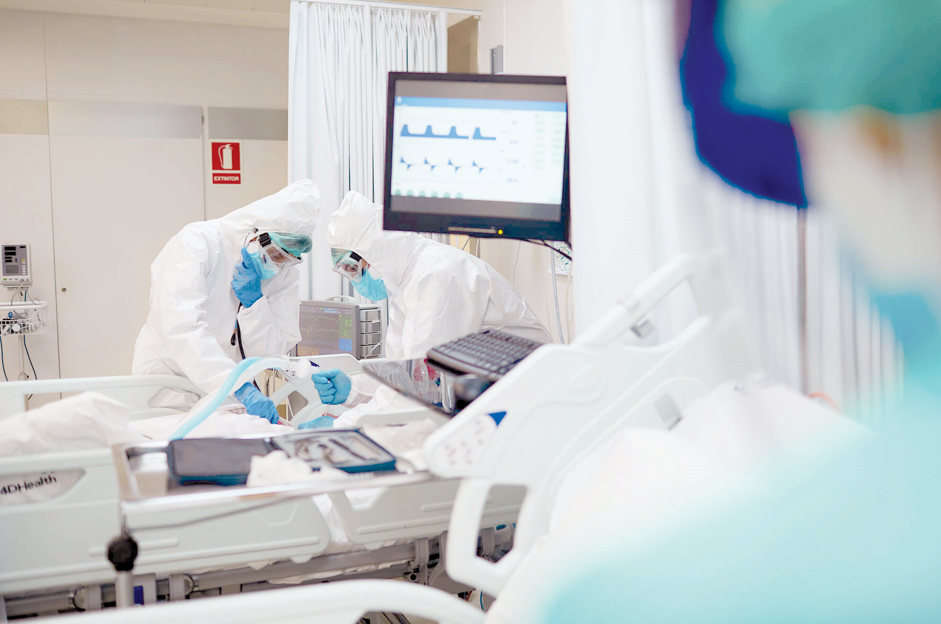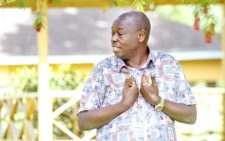Early diagnosis crucial in treating cervical cancer

An old proverb from the Congo says, “A mother is like a kernel, crushed by problems but strong enough to overcome them”. Throughout Africa, mothers and sisters – the continent’s primary caregivers – are the glue that holds families and economies together. Yet, women in the African region are more vulnerable to many more life-threatening diseases and health conditions than women in other regions.
Among these illnesses is cervical cancer, caused by HPV (human papillomavirus), which remains the leading cause of death in women in sub-Saharan Africa – even though it is preventable. January marks Cervical Cancer Awareness Month, and each year brings us closer to the WHO’s 2030 “90-70-90” cervical cancer elimination targets: 90 percent of girls fully vaccinated with the HPV vaccine; 70 percent of women screened with a high-performance test by age 35 and again at 45; and 90 percent of women identified with cervical disease receiving treatment.
When a family’s primary caregiver becomes a casualty of cervical cancer, an entire family system collapses. According to estimates, for every 100 mothers who die from cervical or breast cancer in resource-poor settings, 14 children die before their 10th birthday, and 210 become maternal orphans. As a young physician serving in rural communities in Kenya, I observed this cycle firsthand.
Children left behind suffer enhanced exposure to malaria, tuberculosis, pneumonia or even malnutrition because their mother is not there to care for them.
In Africa, women comprise an estimated 50 percent of the agricultural sector labour force, power over 50 percent of all SMEs, and support families. For Africa to realise its full economic potential, we must prioritise women’s health.
There are currently two testing methods: the traditional pap smear and the newer HPV-DNA testing with self-collection kit. While pap smears have low sensitivity and need to be conducted more often, the self-collection method empowers women to avoid the perceived indignity of a pap smear. According to the WHO, self-collection has proved to be as reliable as samples collected by healthcare providers, and can be done in the privacy of one’s home.
Currently, lack of access to national HPV screening, vaccination, testing and treatment programmes, combined with lack of education and social and economic inequities, prevent women from taking their cervical health into their own hands.
However, governments and policymakers worldwide are becoming more committed to prioritising diagnostics, bolstered by the 2022 adoption of the WHO Resolution on Strengthening Diagnostics Capacity. The resolution prompts government stakeholders to drive equitable access to diagnostics, ultimately driving universal healthcare for all people.
To accomplish the WHO goals, however, we need a collective effort – from our communities, the private and public sectors, healthcare practitioners and anyone else who can make the time to have the necessary conversations about HPV.
Cervical cancer doesn’t just impact the individual — it affects entire communities. In low and middle-income countries, the financial burden of late-stage treatment falls heavily on families and national healthcare systems. Advanced treatments like chemotherapy are costly and often unattainable for many, driving households into poverty.
By contrast, early diagnosis through HPV testing alleviates these financial pressures, reduces treatment costs, eases the strain on overburdened healthcare systems, and enables women to remain active contributors to their families and the economy.
When women thrive, so do the communities they support. Early testing for HPV is their open ‘secret weapon’ – and our roadmap to 90-70-90.
— The writer is Africa Executive Vice President for diagnostics at Roche Diagnostics












